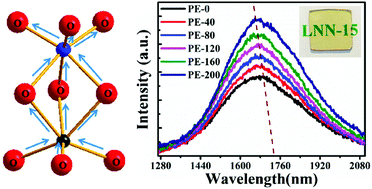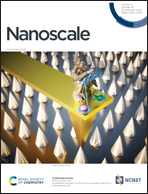Reversible modification of ultra-broadband luminescence in transparent photonic materials through field-induced nanoscale structural transformation
Abstract
The development of integrated multifunctional materials with transparent characteristics meets the requirements of optoelectronics and communication. The coupling of stimuli-responsive materials has become a frequently considered strategy. Experimentalists not only search for photonic materials with excellent physical and chemical properties, but also pursue precise and reversible spectral modification. In this study, the luminescent center Ni2+ is artificially introduced into the transparent LiNbO3 nanoferroelectric photonic materials. The Ni2+ ion-based transparent photonic materials exhibit novel complete ultra-broadband emission in the whole near-infrared region. Until now, the ultra-broadband emission was realized by codoping of several active doping ions. In addition, the emission intensity and wavelength of the luminescent center are modified accurately and reversibly by field-induced nanoscale structural transformation. The Ni2+ ion-based transparent nanoferroelectric photonic materials provide an easy way to develop tunable lasers and ultra-broadband optical amplifiers.



 Please wait while we load your content...
Please wait while we load your content...